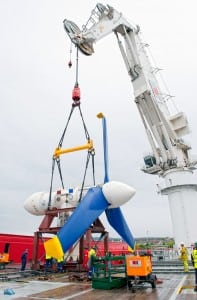
Lockheed Martin [LMT] said last week it commenced a contract with the United Kingdom’s Atlantis Resources Ltd. to optimize the design of its new 1.5-megawatt (MW) tidal turbine. Designed to facilitate operation in highly-energetic tidal locations, the turbine, known as the AR1500, will be one of the largest single rotor turbines ever developed and will have active rotor pitch and full nacelle yaw rotation, according to a Lockheed Martin statement. The increased capability and functionality will initially support the MeyGen…













